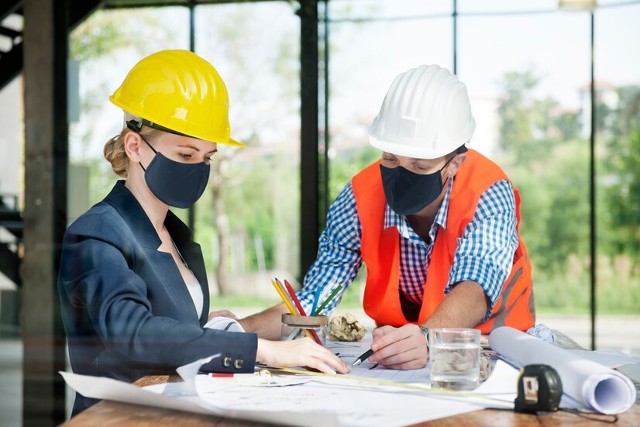With the day-to-day operations involving heavy machinery, complex tasks, and a myriad of potential hazards, ensuring a secure and safe environment is not just a necessity – it’s a duty. Achieving this requires an understanding of the common risks that can compromise the safety and security of a construction site, which range from unauthorized access and theft of materials to physical injuries from inadequate safety measures or protocols. This document will delve into the key steps necessary for maintaining the safety and security of a construction site, an undertaking that can significantly reduce incidences of accidents and losses, enhancing productivity and safeguarding the well-being of everyone on site.

Installing CCTV Systems
This not only aids in deterring potential thieves from targeting your site but also provides a way to review incidents should they occur. Strategically placed cameras can monitor key areas, such as entrances, exits, and storage zones, recording all activities 24/7. The presence of CCTV cameras also fosters a sense of accountability among workers, enhancing adherence to safety protocols. Furthermore, advancements in technology now allow for real-time remote monitoring, enabling you to keep an eye on your construction site from anywhere, anytime. Furthermore, with the existence of CCTV towers with AI capabilities, the footage can be analyzed to detect any suspicious activities, and necessary actions can be taken promptly. Even though installing a CCTV system may seem costly initially, it can save you thousands in potential losses due to theft or damage.
Implementing Strict Access Control Measures
These measures have come more to light ever since 2020, when remote work was essential. Anyways, access to the construction site should be strictly regulated and monitored at all times, ensuring only authorized personnel can enter. Installing barriers, such as fences and gates, is an effective way of controlling who enters the site. Also, issuing unique identification cards or badges with specific access levels that correspond to an employee’s role is necessary. Additionally, implementing a sign-in and sign-out procedure for all workers, visitors, and contractors is crucial. This allows you to have a record of everyone who accessed the site, enabling easy tracing in case of an incident or security breach. Moreover, it’s essential to revoke access immediately for individuals who are no longer authorized to be on-site.
Providing Adequate Safety Training
In every industry, proper training is essential to ensure the safety of workers. This is especially true in the construction industry, where tasks involve heavy machinery and hazardous materials. Providing thorough and regular training on safety protocols, emergency procedures, and equipment operation is crucial for preventing accidents and injuries. All personnel should also be well-versed in identifying potential hazards and handling them appropriately. This includes knowing how to respond to emergencies, such as fires or natural disasters. It’s also essential to provide refresher training periodically, as well as incorporating safety protocols into daily operations. For example, implementing mandatory safety checks before operating machinery or conducting regular site inspections to identify any potential risks.
Regular Safety Inspections and Audits
If you are constantly monitoring your construction site, you will be more prepared to identify potential hazards and implement corrective measures promptly. Regular safety inspections and audits are crucial for maintaining a safe working environment. They allow you to assess the effectiveness of current safety protocols, identify any gaps or areas that need improvement, and take necessary action. Make sure to involve all personnel in these inspections, as they often have valuable insights and suggestions. It’s also essential to conduct safety audits periodically, where a more thorough review of the site’s safety protocols and practices can be done. This enables you to identify any underlying issues that may have gone unnoticed during routine inspections.
Proper Use and Maintenance of Equipment
For construction sites, heavy machinery is often the primary source of potential hazards. It’s crucial to ensure that all equipment is used correctly and maintained regularly according to manufacturer specifications. This includes routine inspections, repairs, and replacements when necessary. Additionally, all personnel should be adequately trained in operating machinery and know how to respond in case of a malfunction or emergency. Strict protocols should also be implemented, such as prohibiting unauthorized use of equipment and ensuring all safety features are functioning correctly. Furthermore, it’s essential to keep a record of all maintenance and repairs for each piece of equipment, enabling you to track their lifespan and identify potential issues before they arise. Overall, proper use and maintenance of equipment are crucial for ensuring the safety and security of everyone on site.
Implementing a Robust Communication System
Communication represents a vital aspect of ensuring safety and security on construction sites. With various personnel involved in different tasks, there needs to be an efficient way of communicating important information quickly. This can include updates on safety protocols, emergencies, or potential hazards that may have arisen. Implementing a robust communication system allows for real-time communication between all personnel, enabling swift response in case of an incident. This can include using radios or designated communication channels for different departments. Additionally, having an emergency response plan in place that includes clear communication protocols is essential for handling critical situations effectively.

Creating and Enforcing a Comprehensive Safety Policy
For any safety and security measures to be effective, they must be clearly outlined in a comprehensive safety policy. This document should include all protocols, procedures, and guidelines for maintaining a secure and safe construction site. It should also outline the consequences of non-compliance with these regulations, emphasizing the importance of adhering to them. Additionally, it’s crucial to involve all personnel in creating and enforcing this policy, ensuring it reflects the needs and concerns of everyone on site. Regular reviews and updates to the safety policy should also be done to incorporate any changes or improvements that may arise.
In conclusion, maintaining safety and security on construction sites requires a multi-faceted approach involving various measures and protocols. By implementing these must-take steps, you can significantly reduce the risk of accidents and losses, promoting a safe and productive working environment for all personnel. Remember, safety is everyone’s responsibility, and it starts with taking the necessary precautions to safeguard yourself and those around you. So, it’s essential to continuously review and improve safety protocols to ensure the well-being of everyone on construction sites remains a top priority. Even though it may seem like a daunting task, the benefits of a secure and safe construction site far outweigh any initial costs or efforts.


